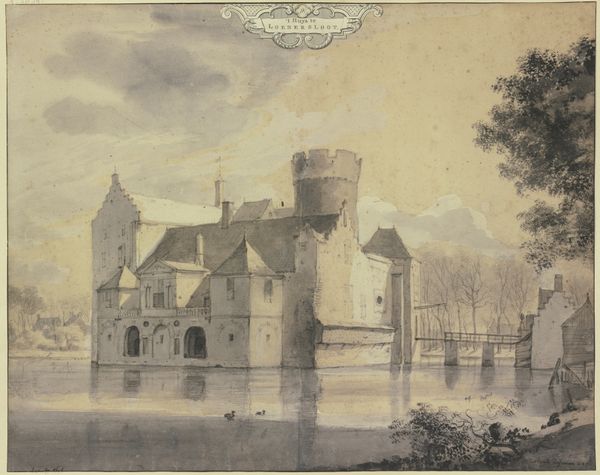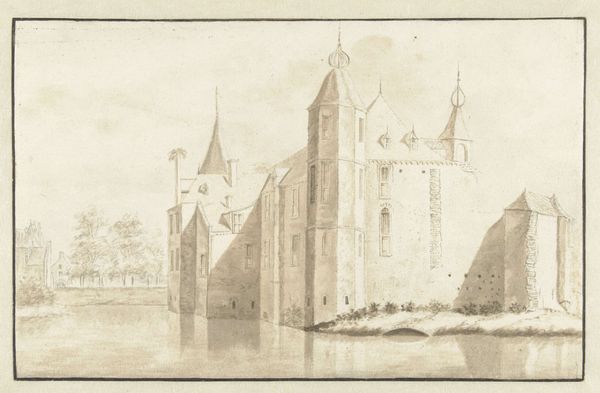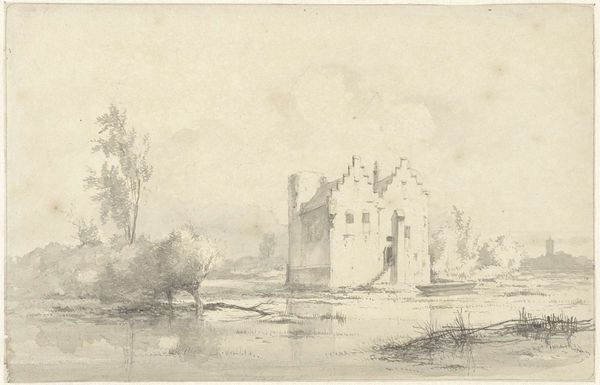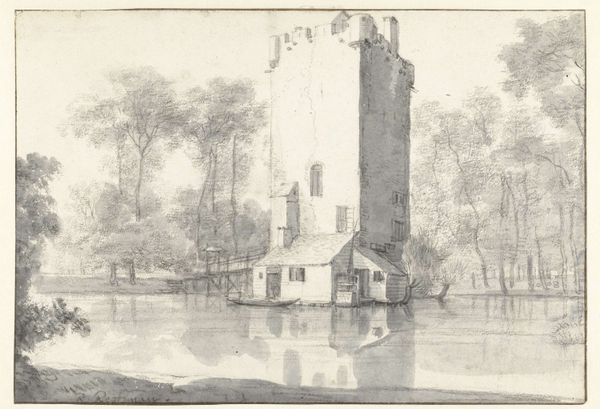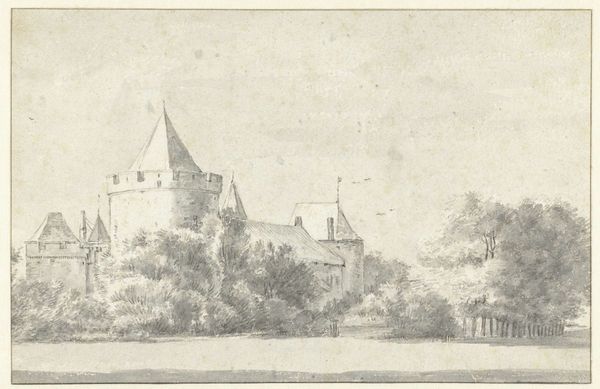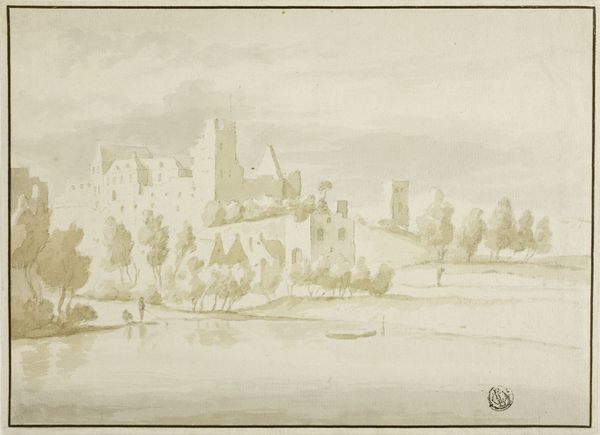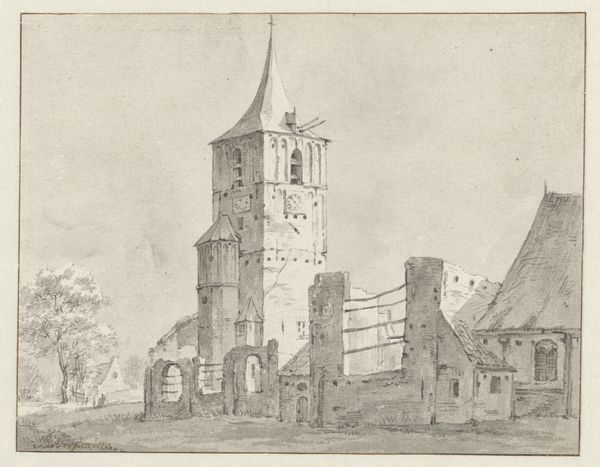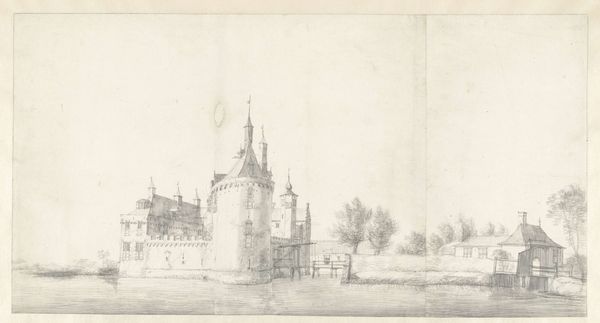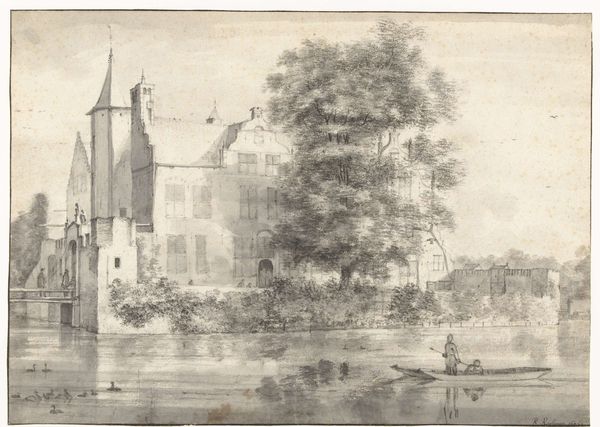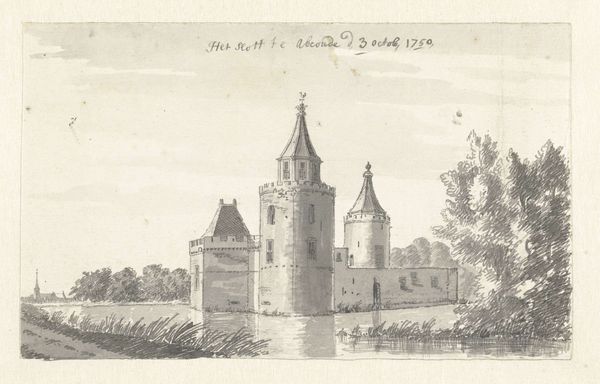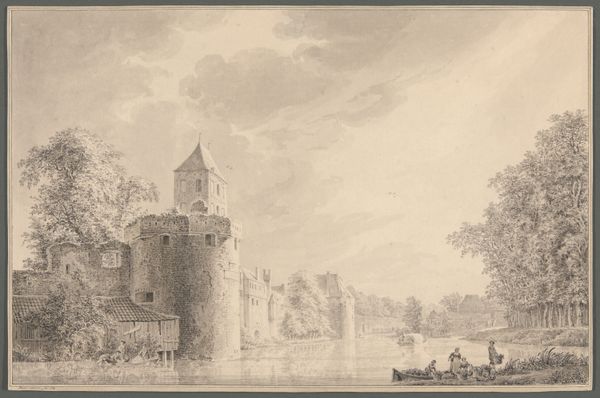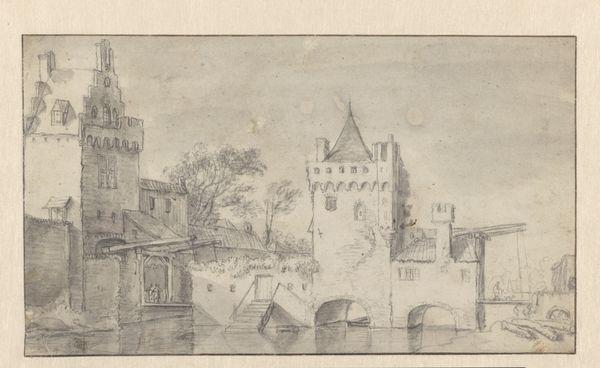
drawing, pencil
#
drawing
#
landscape
#
romanticism
#
pencil
#
19th century
#
pencil art
#
watercolor
#
building
Copyright: Rijks Museum: Open Domain
Hendrik Abraham Klinkhamer made this drawing of the Ruin of Wijk bij Duurstede Castle in the Netherlands, at an unknown date. The ruined castle became a popular subject for artists during the Romantic era. The ruin can be seen as a symbol of the past and its glory. The emphasis on its decay reflects the impermanence of human achievements. The Netherlands in the 19th century saw a rise in national consciousness and the rediscovery of its history. Artists like Klinkhamer played a role in shaping this national identity by depicting historical sites. The Rijksmuseum, where this drawing is housed, was itself founded in this period, reflecting the growing importance of preserving and exhibiting the nation’s cultural heritage. This drawing, with its delicate lines and attention to detail, invites us to reflect on the passage of time and the enduring power of the past. To fully understand it, we might research Dutch history, the Romantic movement, and the establishment of national museums. The meaning of art, you see, is always tied to its social and institutional context.
Comments
No comments
Be the first to comment and join the conversation on the ultimate creative platform.
